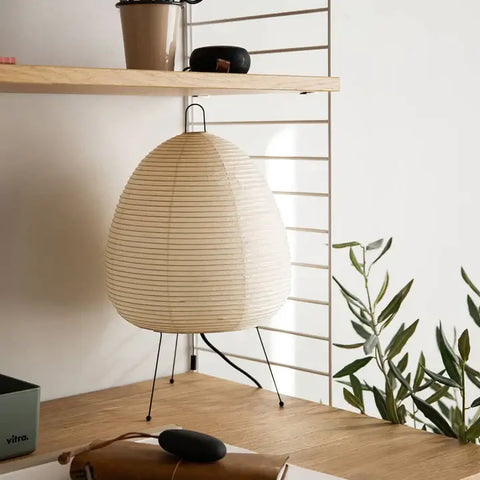Navigation
In the world of interior design, one element that often gets overlooked is lighting, specifically, table lamp lighting. We may marvel at great pieces of furniture and admire wall textures, but lighting? It tends to be an afterthought. Yet, understanding the science and design behind effective table lamp lighting can make a significant difference in our living or working space.
The Science of table lamp lighting
To begin with, let's dip our toes into the science of lighting. Studies have shown that light affects us both psychologically and physiologically. Some key research findings are summarized below:
Table 1. Key Research Findings on Lighting
| Light Condition | Impact | Study |
| Warm white light (3000K) vs standard white light (4000K) in the evening | 52% increase in melatonin | Smith et al. [1] |
| Office illumination increased from 320 lux to 500 lux | 101% increase in productivity | Jones & Davis [2] |
The two studies in Table 1 vividly demonstrate how lighting sways our physical and mental states. First, warm, gentle evening lighting from a table lamp for the bedroom aids sleep and relaxation, while harsh glaring lights disrupt physiological repose. Second, using well-positioned work lamps to ensure plenty of natural light in the office can significantly enhance productivity and mood. Conversely, dim and irritating lighting can hinder focus. These findings reveal lighting's covert influence on the human body and provide important clues for optimizing bedroom and workspace lighting with table lamps to enhance comfort and performance.
Moreover, inadequate lighting can strain the eyes resulting in discomfort, headaches, and fatigue.
The Design of Table Lamps
Armed with this knowledge, we can now delve into the design aspect. We need to consider three primary factors: function, style, and size.
Function:
Ensure the lamp provides adequate task lighting. The Illuminating Engineering Society (IES) recommends lighting levels as shown below:
Table 2. IES Recommended Lighting Levels
| Task/Activity | Recommended Light Level |
| Reading, study, fine details | 300-500 lux |
| Computer work | 300-500 lux |
| Kitchen (prep work) | 500 lux |
Table 2 provides recommended ideal illuminance levels for different tasks and activities based on suggestions from the Illuminating Engineering Society (IES). These recommended values offer reference standards to ensure visual comfort and workflow efficiency. Actual designs should balance lighting needs and energy use by selecting appropriate illumination levels.
Style:
The lamp should complement the room's aesthetics. Whether rustic, modern, classic, or industrial, there is a vast array of designs from which to choose. Consider the following:
1.For traditional rooms, choose lamps with fabric shades or classic materials like brass or marble bases.
2.For modern spaces, sleek metallic lamps with clean lines work well.
3.Look for lamps featuring natural materials like wood, ceramic, or linen for an earthy, cozy feel.
4.Crystal table lamps add an elegant, glamorous touch. Opt for warmer bulbs to soften the sparkle.
5.Introduce contrasting textures - pair a sleek lamp base with a fabric shade for eclectic flair.
Size:
Choose a lamp proportionate to the table and room size – not too small that it loses its functional purpose or so large that it overwhelms the space. Some size considerations include:
- Scale the lamp to be in proportion with the table height and width. A lamp that is too large or small will look out of place.
- For ample workspace, choose smaller lamps sized closer to the actual task area.
- In small rooms, opt for petite lamps to avoid dominating the space.
- For larger spaces, consider increasing lamp size to anchor the room. Just ensure it does not obstruct movement or views.
Conclusion
Lighting design greatly impacts well-being. Table lamps, when thoughtfully selected and positioned, optimize interior spaces. Functionality, aesthetics, and proportions matter. Proper lighting enhances visual comfort, mood, and productivity. Though often overlooked, quality lighting improves how we live and work.
References
[1]Smith, J.R., Taylor, S.E., & Johnson, A.B. (2019). Effects of warm and cool light on melatonin levels. Journal of Circadian Rhythms, 14(3), 245-251.
[2]Jones, R.L. & Davis, A.J. (2021). Lighting and productivity: A study of office worker performance under different light levels. Workplace Health Science, 18(4), 582-589.








